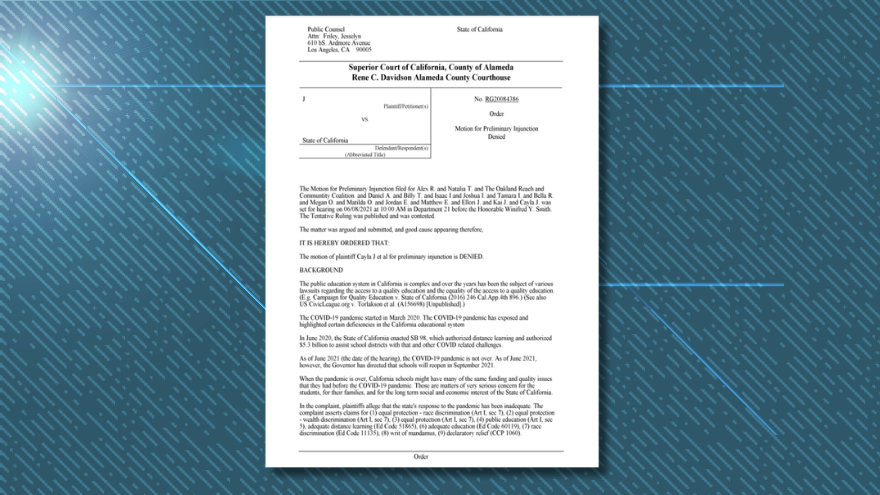Now, as outlined in the settlement agreement, the state will have to allocate at least $2 billion in funding to help catch up students who fell behind when schools switched to remote learning. The funding will be required to be invested into programs and organizations that have already demonstrated a statistically significant increase in student performance. “The urgent vision of this historic settlement is not just to recoup the academic losses suffered by California’s most disadvantaged students, but to erase the opportunity gaps altogether exacerbated by the pandemic,” said Mark Rosenbaum, Senior Special Counsel for Strategic Litigation for the legal firm Public Counsel, which represented the parents on the lawsuit. “This is a victory of partnership of students, caregivers, and community organizations with California’s leadership that recognizes that educational opportunity is the State’s greatest natural resource,” Rosenbaum added in a joint statement on the settlement. In March 2020, California was one of many states that completely shut down in-person learning and forced students into remote learning. However, many students did not have the digital infrastructure at home necessary to continue classes. As a result, with no other options, many students fell behind. The state is statutorily required to provide equal educational opportunity to all students. However, children from lower-income families in predominantly black and Latino communities fared worse than their counterparts because of school closures. High-poverty districts reopened an average of 69 days later that low-poverty districts, while predominantly non-white districts reopened on average 72 days after districts with mostly white students. Parents filed a lawsuit to force the state to provide relief and help students make up for the learning losses they suffered as the result of education officials cancelling in-person learning. Data from the California Education Department indicate that test scores plummeted after pandemic-related school closures, nearly wiping out academic progress made over the previous eight years. The percentage of students proficient in math dropped seven points to 33 percent, while the percentage of students meeting English language standards fell four points to 47 percent, following a nationwide trend. A new report published this week by Harvard University shows that many schools did not return to fully in-person classes until fall 2021. Test results from the following spring showed that the average student between third and eighth grades lost the equivalent of “half a grade level in math achievement and a third of a grade level in reading achievement.” Under the California settlement, each local education agency will select the plans and programs for reaching students and will be required to report on the programs’ success using measurable outcomes. “This is such a huge victory and much-deserved investment in California’s Black and Brown students who are still feeling the impacts of the COVID-19 pandemic,“ Community Coalition’s President and CEO Alberto Retana said in the joint statement. “Community Coalition devised a virtual summer program targeting academics, technology, and wellness to provide for our students’ educational needs. Our approach considered English language and technological proficiency and other nuances that characterize the curriculums and educational inequities of South L.A. schools.”A group of parents has won a lawsuit against the California Department of Education over learning losses suffered by children as a result of school closures during the COVID pandemic.
Education /
California Parents Win Lawsuit, Force State To Spend $2 Billion On Learning Loss
Pandemic school closures resulted in a steep drop in educational outcomes

*For corrections please email [email protected]*
